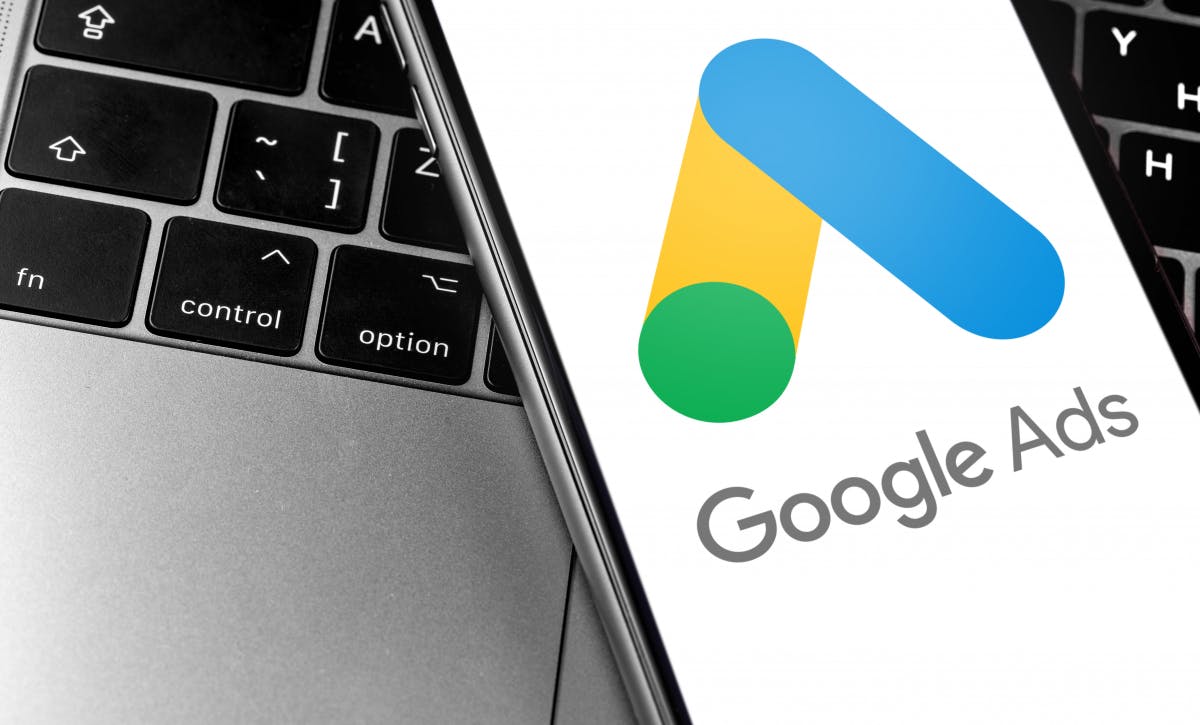Smart bidding with Google Ads – this is also how it works in the B2B environment
Few clicks and conversions in the Google Ads account? That makes automation difficult. With these tips you can still use Google’s smart bidding strategies successfully.
Save time and get better results at the same time. This is what Google promises with its automated bid strategies, Smart Bidding: target CPA, target ROAS, maximize conversions. These terms are part of the basic vocabulary for online shops and have been part of every Google Ads account for years.
In the B2B area and for Google Ads accounts with only a few conversions (less than 20), things look different. Due to the low number of clicks and conversions, the smart bidding strategies cause extreme fluctuations in performance. Monitoring over a month is hardly possible. Incorrect settings can mess up the performance of the account that was previously optimized by manual bids.
Four to ten high-quality queries via Google Ads are a good number for most medium-sized B2B companies.
Contents
Conversions – the more, the better!
In order for us to be able to use the smart bidding strategies effectively, we need conversions. In online marketing, conversion is usually understood to be the conversion of a prospect to a customer. In the B2B segment, this is almost always the establishment of contact via a contact form, by phone or via live chat.
Therefore ensures a clean conversion tracking. Integration through the Google Tag Manager is particularly suitable for this. Telephone tracking is also of particular importance for many B2B companies.
Google Ads allows free phone tracking over a small amount additional scriptthat swaps your phone number for a Google forwarding number. Depending on the industry, you may receive significantly more contact requests by phone than via the contact form. Eight out of ten contact requests over the phone are not uncommon in B2B.
Soft conversions – a good idea
The fewer conversions, the longer the algorithm takes to learn and the greater the fluctuations in performance. Since only a few correct conversions per month are usually possible in the B2B sector, it makes sense to soften the term conversion a little. By softening the actual conversion, one speaks colloquially of soft conversions.
Specifically, actions should be defined as soft conversions that indicate that we have reached the right user. In the case of very long landing pages, this can be, for example, a combination of scrolling depth and length of stay, calling up the contact page or visiting more than three pages.
Further examples of soft conversions:
- Click on a call-to-action button
- Download a white paper or PDF
- Visiting more than three pages per session
- Click on an email address
- Click on a phone number
- Video viewed 75 percent
Ideally, you will already see all of these values as a conversion or event in your web analysis tool (such as Google Analytics). This makes it possible, for example, via a segment (only users with “real” conversions) to find out which soft conversions are an indicator of a later “real” conversion.
Tip: Remember to set soft conversions to the counting method “one conversion” in Google Ads. For example, only one conversion is recorded even though the user has clicked a call-to-action button five times.
Defining the conversion value helps the algorithm
What is a contact request worth to me? For many companies, this question is very difficult to answer. In a perfect initial situation you have a database of several years and can calculate an approximate customer lifetime value (CLV) using dozen examples and put it in relation to all contact inquiries received – ideally broken down into telephone inquiries, the contact form and the click of a button . If you already have this data, great! The reality is different for almost all companies.
You can now deal with the question of the CLV for weeks or develop a simple pragmatic approach. It’s about the relationship between soft and real conversion. Nevertheless, the starting point for the value of a soft conversion should always be the value of a real conversion. An example calculation could look like this:
Ten contact requests usually result in an order with an average CLV of 10,000 euros. The target ROAS is 500 percent. A contact form then has the value of 200 euros. As a conversion value in Google Ads can therefore be deposited 200 euros.
The value of a soft conversion is calculated from the ratio between real and soft conversion. For example, a whitepaper download can be worth 25 euros, since roughly every eighth user who downloads a whitepaper also makes contact (200 euros divided by 8 = 25 euros). Is your contact form behind a button “Contact us now”? Every tenth user who clicked the button submits a form. Then you can deposit a value of 20 euros for each click on the button (200 euros divided by 10).
This is not about the exact calculation of the ROAS, but rather you manage to inform the algorithm by storing a conversion value that conversion is not the same as conversion. Google then weights the signals differently based on the conversions carried out.
Bid strategy – which one is right for B2B companies?
Many companies in the B2B area like to rely on the “target CPA” bid strategy. The prospect of paying a fixed price for a contact request sounds very promising at first glance. In fact, “Target CPA” works very well with a sufficient number of hard conversions (more than 50 per month). But that is not realistic for many medium-sized B2B companies in Germany. “Target CPA” is also not suitable for use with soft conversions, since every conversion is weighted equally here. The same applies to the “maximize conversions” bid strategy.
With the approach of feeding the algorithm with more data via soft conversions, there are basically two possible strategies:
- Maximize conversion value
- Target ROAS
At the beginning you usually have little or no data on ROAS. It is therefore advisable to start with the “maximize conversion value” bid strategy. With this bid strategy, Google weights the conversions using the conversion value. For example, if a keyword ensures a particularly high number of “real” conversions, the conversion value also rises and more is offered for this keyword in the ad auction – even if another keyword generates a similar number of conversions, but soft conversions in particular are measured here.
Tip: If you reach a homogeneous target group through different campaigns, you should use “maximize conversion value” as a portfolio bid strategy.
Having the right budget is critical to the success of the maximize conversion value bid strategy. It shouldn’t be too low, but by no means too high. Too high a budget almost always leads to very high click prices, which can lead to high costs per conversion. If the click price increases and the budget is not restricted, it is advisable to reduce the budget again.
Sustainable performance improvements can usually be expected after a month. The test phase should therefore last at least six weeks.
If you want even more automation, you can switch to the target ROAS bid strategy after a few months. The right campaign budget then no longer has to be chosen so strongly and more continuity can be achieved.
With a few tricks and tweaks, Smart Bidding can also be used in small B2B accounts. The recommended minimum number of conversions is an average of four “real” conversions per month. By using this strategy, performance increases of 20 to 30 percent can be achieved while at the same time reducing the monthly effort.



